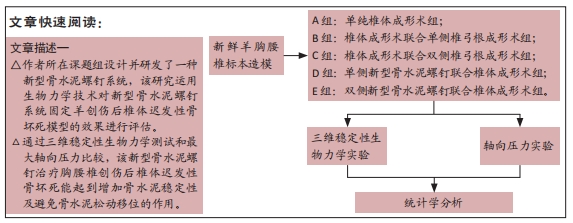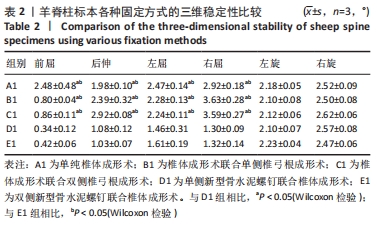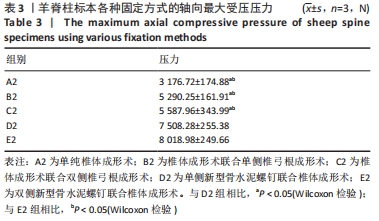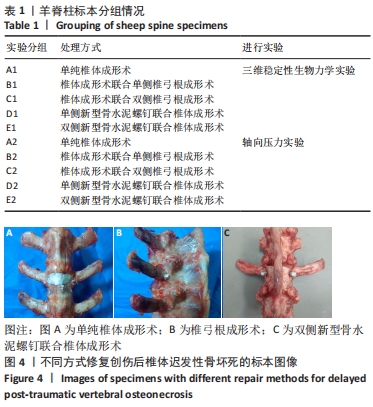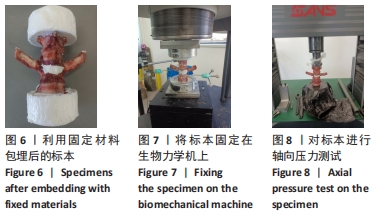[1] CUI L, CHEN L, XIA W, et al. Vertebral fracture in postmenopausal Chinese women: a population-based study. Osteoporos Int. 2017;28(9):2583-2590.
[2] RAJASEKARAN S, KANNA RM, SCHNAKE KJ, et al. Osteoporotic Thoracolumbar Fractures-How Are They Different?-Classification and Treatment Algorithm. J Orthop Trauma. 2017;31 Suppl 4:S49-S56.
[3] OSTERHOUSE MD, KETTNER NW. Delayed posttraumatic vertebral collapse with intravertebral vacuum cleft. J Manipulative Physiol Ther. 2002;25(4): 270-275.
[4] YOUNG WF, BROWN D, KENDLER A, et al. Delayed post-traumatic osteonecrosis of a vertebral body (Kummell’s disease). Acta Orthop Belg. 2002;68(1):13-19.
[5] ADAMSKA O, MODZELEWSKI K, STOLARCZYK A, et al. Is Kummell’s Disease a Misdiagnosed and/or an Underreported Complication of Osteoporotic Vertebral Compression Fractures? A Pattern of the Condition and Available Treatment Modalities. J Clin Med. 2021;10(12):2584.
[6] CHEN L, DONG R, GU Y, et al. Comparison between Balloon Kyphoplasty and Short Segmental Fixation Combined with Vertebroplasty in the Treatment of Kümmell’s Disease. Pain Physician. 2015;18(4):373-381.
[7] LIM J, CHOI SW, YOUM JY, et al. Posttraumatic Delayed Vertebral Collapse : Kummell’s Disease. J Korean Neurosurg Soc. 2018;61(1):1-9.
[8] ZHANG X, HU W, YU J, et al. An Effective Treatment Option for Kümmell Disease With Neurological Deficits: Modified Transpedicular Subtraction and Disc Osteotomy Combined With Long-Segment Fixation. Spine (Phila Pa 1976). 2016;41(15):E923-E930.
[9] WANG F, WANG D, TAN B, et al. Comparative Study of Modified Posterior Operation to Treat Kümmell’s Disease. Medicine (Baltimore). 2015;94(39): e1595.
[10] ZHANG GQ, GAO YZ, ZHENG J, et al. Posterior decompression and short segmental pedicle screw fixation combined with vertebroplasty for Kummell’s disease with neurological deficits. Exp Ther Med. 2013;5(2):517-522.
[11] PEH WC, GELBART MS, GILULA LA, et al. Percutaneous vertebroplasty: treatment of painful vertebral compression fractures with intraosseous vacuum phenomena. AJR Am J Roentgenol. 2003;180(5):1411-1417.
[12] MA R, CHOW R, SHEN FH. Kummell’s disease: delayed post-traumatic osteonecrosis of the vertebral body. Eur Spine J. 2010;19(7):1065-1070.
[13] LIU F, CHEN Z, LOU C, et al. Anterior reconstruction versus posterior osteotomy in treating Kümmell’s disease with neurological deficits: A systematic review. Acta Orthop Traumatol Turc. 2018;52(4):283-288.
[14] KRAUSS M, HIRSCHFELDER H, TOMANDL B, et al. Kyphosis reduction and the rate of cement leaks after vertebroplasty of intravertebral clefts. Eur Radiol. 2006;16(5):1015-1021.
[15] CHEN GD, LU Q, WANG GL, et al. Percutaneous Kyphoplasty for Kummell Disease with Severe Spinal Canal Stenosis. Pain Physician. 2015;18(6): E1021-1028.
[16] LU W, WANG L, XIE C, et al. Analysis of percutaneous kyphoplasty or short-segmental fixation combined with vertebroplasty in the treatment of Kummell disease. J Orthop Surg Res. 2019;14(1):311.
[17] ATEŞ A, GEMALMAZ HC, DEVECI MA, et al. Comparison of effectiveness of kyphoplasty and vertebroplasty in patients with osteoporotic vertebra fractures. Acta Orthop Traumatol Turc. 2016;50(6):619-622.
[18] ZHANG J, FAN Y, HE X, et al. Is percutaneous kyphoplasty the better choice for minimally invasive treatment of neurologically intact osteoporotic Kümmell’s disease? A comparison of two minimally invasive procedures. Int Orthop. 2018;42(6):1321-1326.
[19] NIU J, SONG D, ZHOU H, et al. Percutaneous Kyphoplasty for the Treatment of Osteoporotic Vertebral Fractures With Intravertebral Fluid or Air: A Comparative Study. Clin Spine Surg. 2017;30(8):367-373.
[20] JAY B, AHN SH. Vertebroplasty. Semin Intervent Radiol. 2013;30(3):297-306.
[21] NORIEGA D, MAESTRETTI G, RENAUD C, et al. Clinical Performance and Safety of 108 SpineJack Implantations: 1-Year Results of a Prospective Multicentre Single-Arm Registry Study. Biomed Res Int. 2015;2015: 173872.
[22] CHANG JZ, BEI MJ, SHU DP, et al. Comparison of the clinical outcomes of percutaneous vertebroplasty vs. kyphoplasty for the treatment of osteoporotic Kümmell’s disease:a prospective cohort study. BMC Musculoskelet Disord. 2020;21(1):238.
[23] ZHANG C, WANG G, LIU X, et al. Failed percutaneous kyphoplasty in treatment of stage 3 Kummell disease: A case report and literature review. Medicine (Baltimore). 2017;96(47):e8895.
[24] TSAI TT, CHEN WJ, LAI PL, et al. Polymethylmethacrylate cement dislodgment following percutaneous vertebroplasty: a case report. Spine (Phila Pa 1976). 2003;28(22):E457-460.
[25] NAGAD P, RAWALL S, KUNDNANI V, et al. Postvertebroplasty instability. J Neurosurg Spine. 2012;16(4):387-393.
[26] KÜHN KD, HÖNTZSCH D. Augmentation with PMMA cement. Unfallchirurg. 2015;118(9):737-748.
[27] LEE SH, KIM ES, EOH W. Cement augmented anterior reconstruction with short posterior instrumentation: a less invasive surgical option for Kummell’s disease with cord compression. J Clin Neurosci. 2011;18(4):509-514.
[28] PARK SJ, KIM HS, LEE SK, et al. Bone Cement-Augmented Percutaneous Short Segment Fixation: An Effective Treatment for Kummell’s Disease? J Korean Neurosurg Soc. 2015;58(1):54-59.
[29] HUANG YS, GE CY, FENG H, et al. Bone Cement-Augmented Short-Segment Pedicle Screw Fixation for Kümmell Disease with Spinal Canal Stenosis. Med Sci Monit. 2018;24:928-935.
[30] CHO Y. Corpectomy and circumferential fusion for advanced thoracolumbar Kummell’s disease. Musculoskelet Surg. 2017;101(3):269-274.
|
